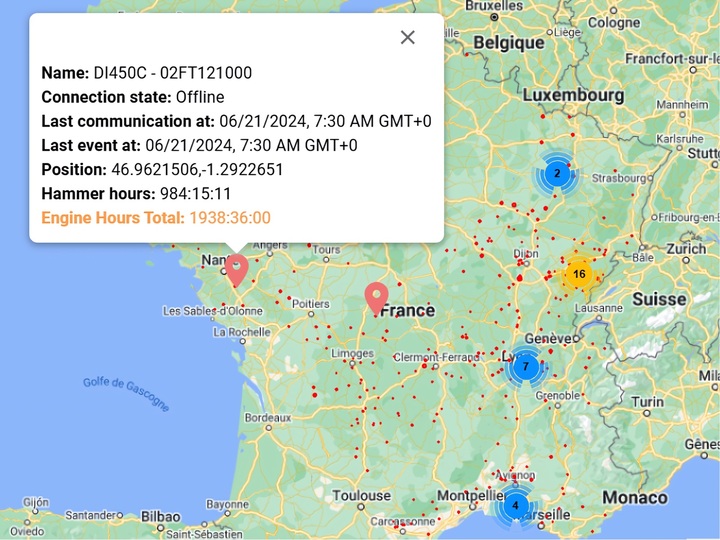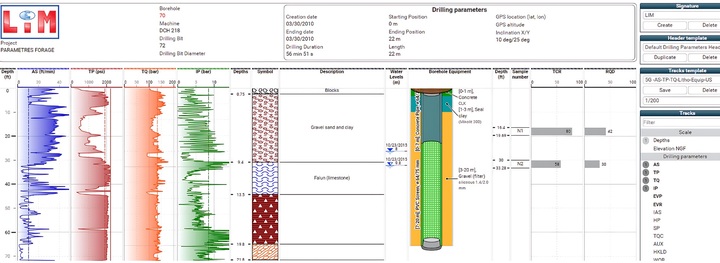As the drilling, mining and civil engineering sectors continue to evolve, the integration of web-based solutions and cloud technologies is becoming more and more common. A web-based solution will be independent from the concerned computer terminal and operating system, and data will be backed up automatically on a remote server in the cloud, no longer justifying a local back-up.
MWD data loggers
The main requirement in geotechnics, foundations, and mining industries is to convert primary recording files from MWD data loggers directly into the best usable format for other applications and software.
· Each data logger manufacturer uses its own proprietary data format files.
· Each country has developed its own XML converter format standard:
o https://www.ags.org.uk/data-format
o https://www.geoinstitute.org/sites/default/files/inline-files/DIGGS%2BBrochure.pdf
This kind of BOR library allows a smooth transition by offering a streamlined method to convert primary recording data files coming from the MWD data loggers in JSON format (JSON (JavaScript Object Notation), pronounced /ˈdʒeɪsən/ or /ˈdʒeɪˌsɒn/) is an open standard file format and data interchange format that uses human-readable text to store and transmit data objects consisting of attribute-value pairs and arrays (or other serialisable values).
Borehole Open Recording
The BOR (borehole open recording) format plays a crucial role in addressing compatibility issues between MWD data loggers and data processing systems. Utilising a compressed structure similar to tar.gz and typically consisting of at least two files,
• An XML file, description.xml, that describes all static technical information that does not change during the recording process.
• One (typically) or multiple data.nc files that use the netCDF (3.6+) format. These files contain data logs and specific data specifications.

To effectively manage BOR files, LIM has developed a library that decompresses, reads, parses and converts the data into JSON format. JSON's readability and accessibility make the raw data easily interpretable and accessible to a broad range of stakeholders, including authorities and private companies.
Data collection
This approach not only simplifies the data interpretation but also ensures that critical information is readily available, enhancing decision-making and operational efficiency.
The BOR files are not only useful for collecting MWD data but can also allow the collection of machine data, allowing companies to monitor metrics such as fuel consumption, equipment location, and drilling progress with greater precision. Collecting data directly from equipment can also allow the establishment of a preventive maintenance plan. This can significantly reduce costs compared to dealing with breakdowns post-event.

The use of the BOR file method not only enhances operational oversight but also saves valuable time by generating pre-formatted, detailed reports. Embracing this BOR approach allows the industry to improve efficiency, accessibility, and decision-making, aligning with the future of web-based operations. Detailed specifications and information about the data contained within the BOR format can be found at bor-form.at ( https://bor-form.at/en/ )


















